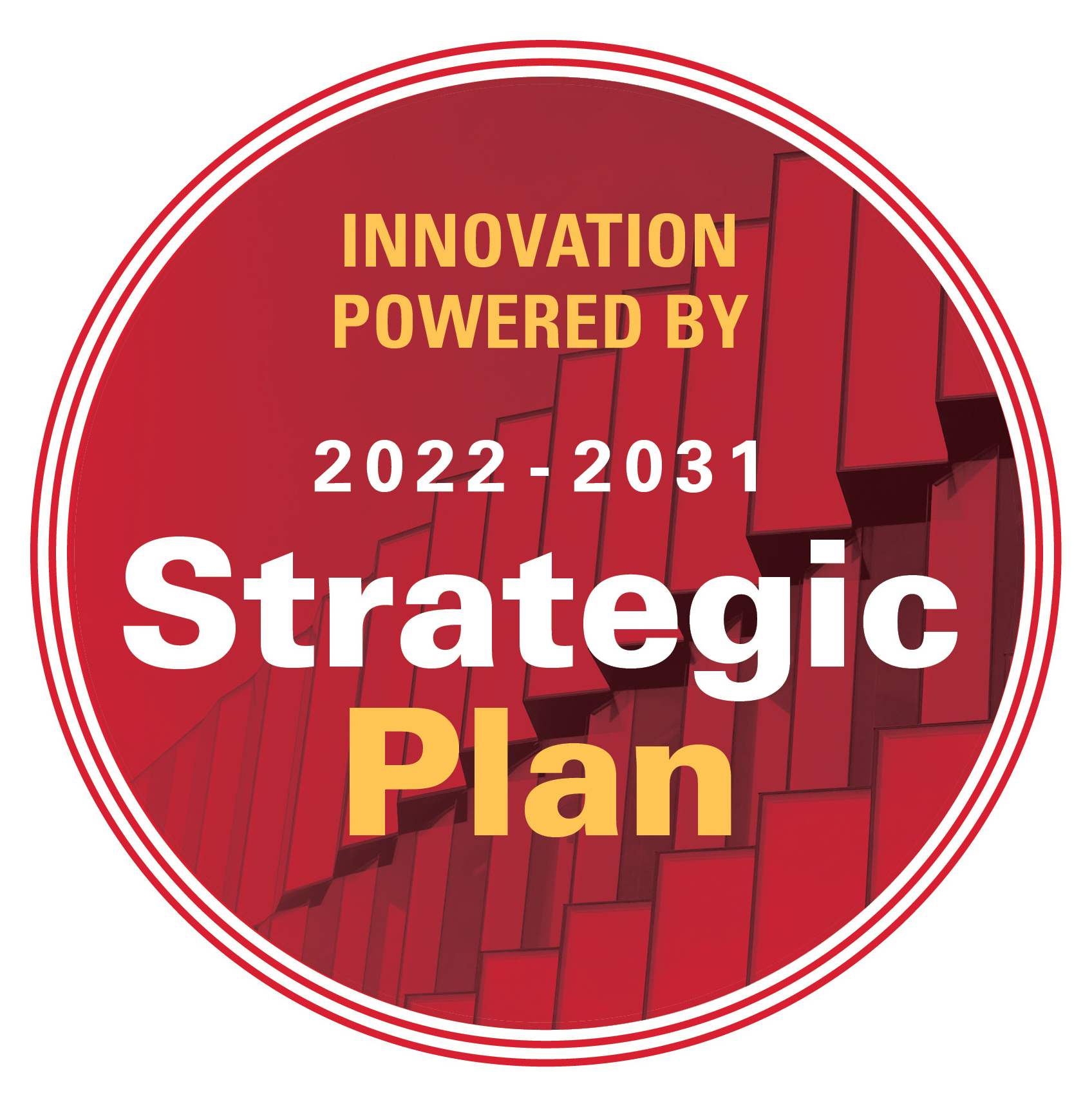Five aspirational statements that would drive the university's strategic planning over the next nine years are being shared this month and next with various campus audiences and external stakeholders. The five "to be" statements are:
- To be the most student-centric major research university.
- To be the university that fosters lifelong learning.
- To be the trusted partner for proactive and innovative solutions.
- To be the university that creates opportunities and forges new frontiers.
- To be the university that cultivates a diverse, equitable and inclusive environment where students, faculty and staff flourish.

In town halls for faculty-staff and student audiences, vice president for research Peter Dorhout, who chairs the strategic plan steering committee, outlined a yearly review, priority-setting and project proposal process designed to propel the university forward while ensuring some flexibility with changing conditions. The strategic plan really is a strategic process, he said.
"We were asked to create an innovative plan, one that's dynamic," he said. "This proposal includes a built-in process to get campus input and feedback on how we're doing and to take advantage of opportunities when they come up.
"It's a unique process that requires retooling, repositioning and continuous input to capture those opportunities," he added.
Dorhout outlined an approximately 15-month recurring process that would include:
- Input on progress and needs from the university community and other stakeholders
- Priorities set by senior leaders
- A request for proposals and proposal review process
- Approval of projects and budgetary commitment by July 1 each year
- Ongoing, transparent communication about the process, selected projects and outcomes
Learn more
Projects could be short-term (a year or less) or require several years "to bear fruit," he said, but would contain metrics for success and completion.
The 52 members of the strategic plan working groups currently are designing the details of the new process. Project funding will require partnerships across Iowa State's four divisions, Dorhout said. It's a key consideration for the task forces to flesh out.
Thematic pillars for guidance
In addition to the five "to-be" goal statements, the working groups identified four thematic pillars that provide structure and direction to the strategic planning process: Innovative solutions, knowledge and discovery, education experience and community engagement. They complement and intersect with Iowa State's teaching, research, service and extension missions, but better describe the university's work and its audiences, Dorhout said.
Structures needed
The annual self-assessment and project proposal process adds work to already taxed university employees, Dorhout noted. He said the steering committee is "grappling with" how to manage a potentially high volume of ideas and workflow versus a desire for the most efficient, sustainable oversight structure possible. The current strategic plan draft proposes:
- A new office of strategic success to coordinate workload
- A request for proposals process
- Employee review teams (three-year terms) that assess project proposals and make recommendations to senior leaders
- A new website that shares annual process, funded projects and success stories
Next steps for the draft
Faculty, staff, students and external stakeholders are invited to provide input on the strategic plan draft in an online Qualtrics form. The form includes a link to the slides used in the town hall presentation. The Feb. 21 town hall for faculty and staff is archived on the 2022-31 strategic plan homepage, although it doesn't offer a feedback opportunity.
Listening sessions -- roughly 20 in all -- will continue through spring break, after which the working groups and consultants will modify the draft as needed and present a final draft to the steering committee by the end of March. It could land on President Wendy Wintersteen's desk in early April, and if it has her approval, it would be submitted to the state Board of Regents for final approval, possibly at its June 2 meeting. The goal is a July 1 implementation.


